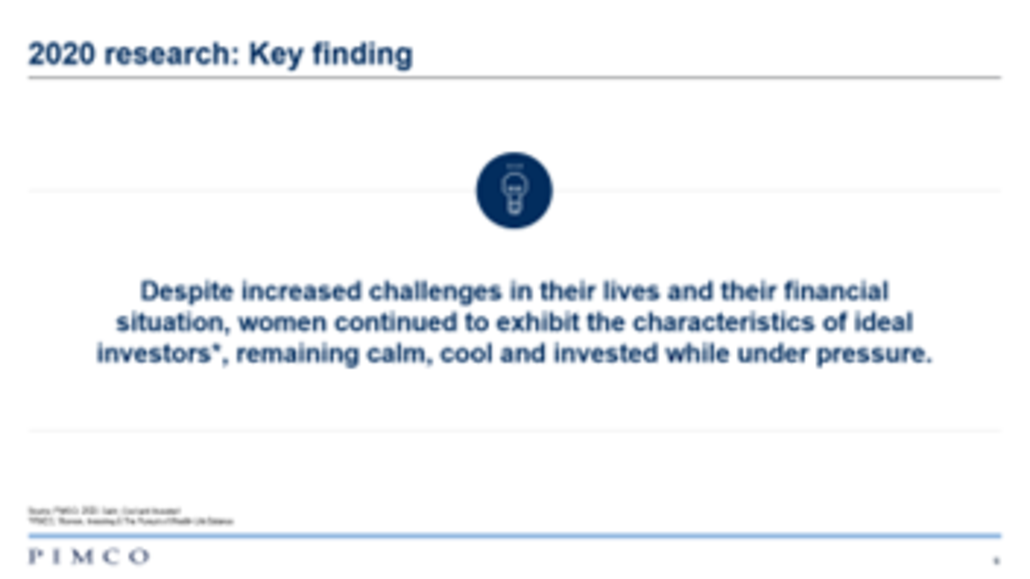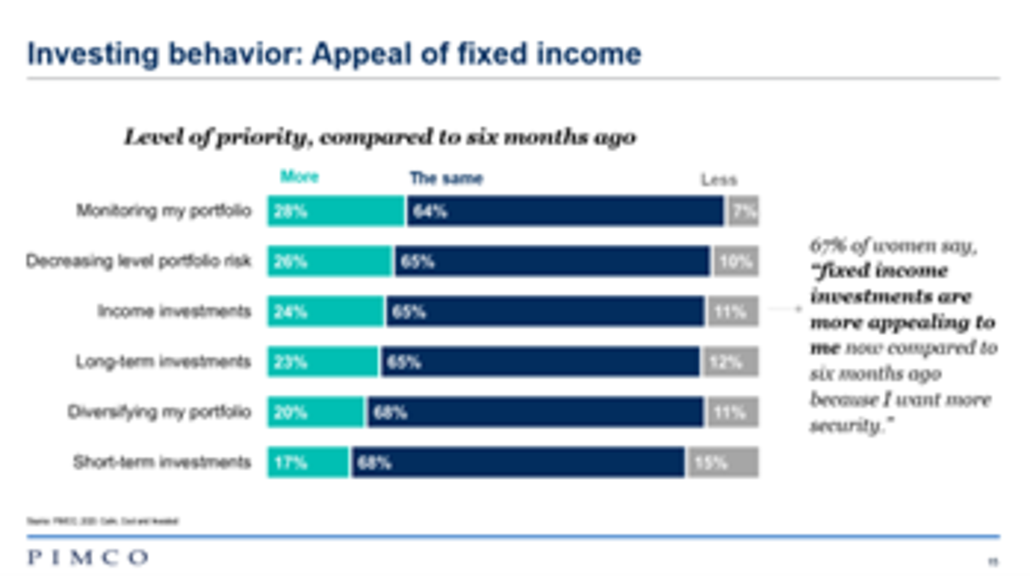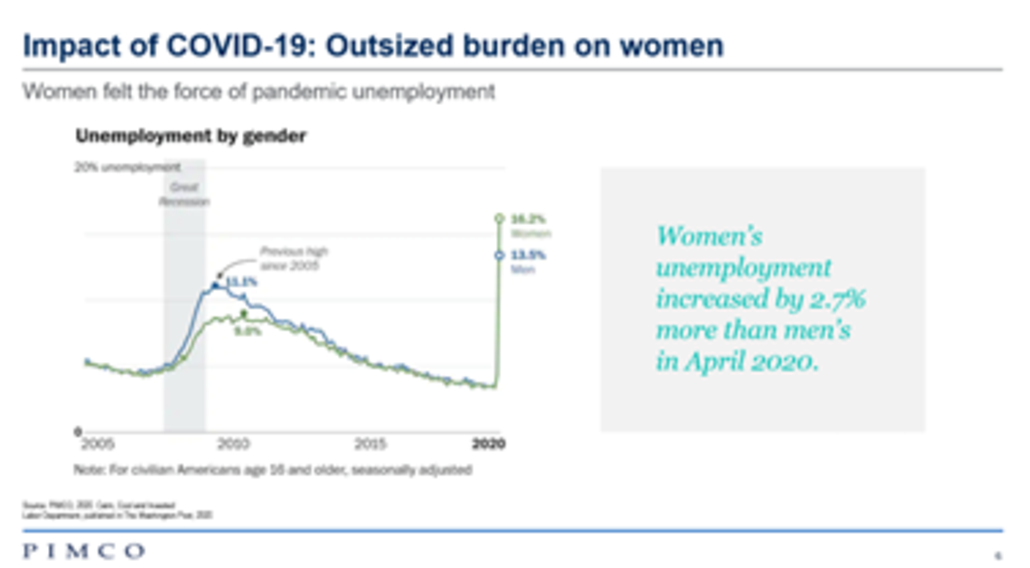Services for Women

The Pidgeon Group specializes in financial services for women, including understanding each clients’ goals and tailoring our investment solutions to meet these goals. The Pidgeon Group is a market leader for women in wealth with the guidance from our financial advisors Alice Pidgeon and Shannon Pidgeon. Below are some tips and resources for women investors:

Key findings on how women invest:
- Women are great managers of uncertainty
- Women are active in various forms of financial decision-making
- Women are leaders in emphasizing financial literacy
- Women are communicators and respond to open and honest dialogue
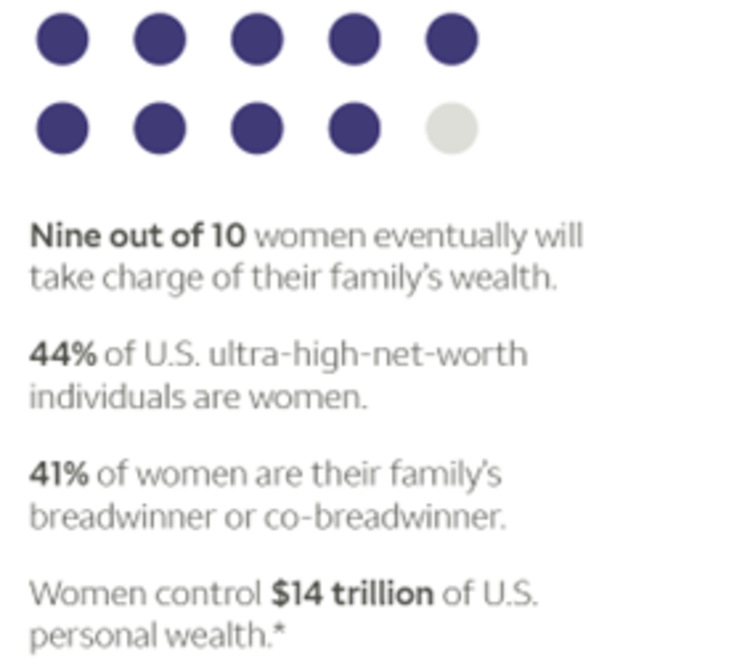
When the Wells Fargo Investment Institute surveyed investors, women were optimistic about their ability to achieve short –and long-term investment goals and have become increasingly assured that the stock market is a good place to invest. We also found that women investors are more likely to work with an investment professional and more inclined to stick to their investment plan.
Source: WFII Women and investing study – The strengths of women investors (March 2020)
Source: Women’s Quick Facts: Compelling Data on Why Women Matter,” STEMconnector®, November 2016; Statista Research Department, 2021. Ultra-high-net-worth individuals are defined as individuals with a net worth of 30 million U.S. dollars or more; Center for American Progress analysis of data from the U.S. Census Bureau, 2019; New York Life Investment Management, 2020.
Source: WFII Women and investing study – The strengths of women investors (March 2020)
Source: Women’s Quick Facts: Compelling Data on Why Women Matter,” STEMconnector®, November 2016; Statista Research Department, 2021. Ultra-high-net-worth individuals are defined as individuals with a net worth of 30 million U.S. dollars or more; Center for American Progress analysis of data from the U.S. Census Bureau, 2019; New York Life Investment Management, 2020.
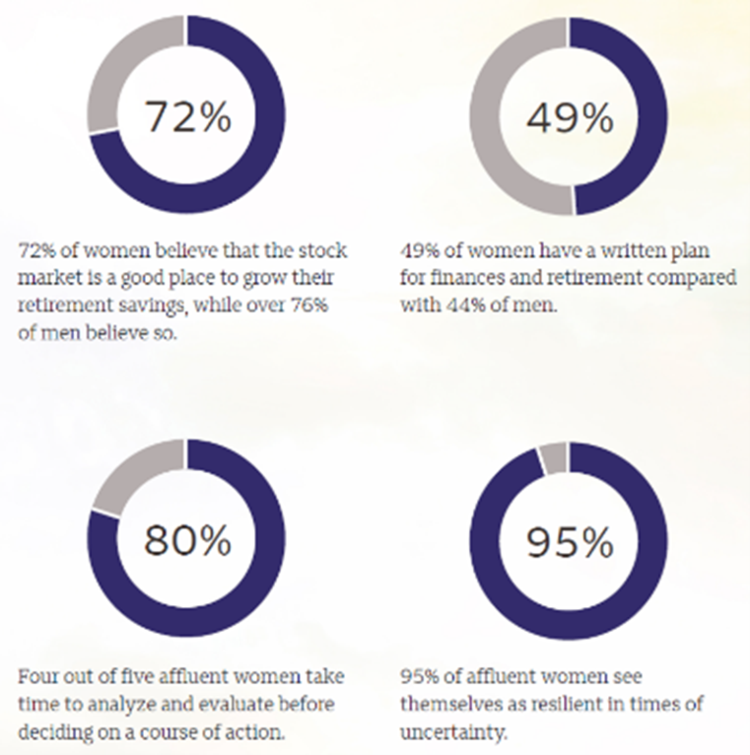
In the WFII most recent investor survey, they found that women increasingly are becoming as optimistic as men about the performance of the stock market; however, across all age groups, they remain less inclined to take on greater risk in hopes of generating higher returns.* Working with an investment professional is one way to determine an appropriate strategic asset allocation.
CAR #0222-00802
Source: Wells Fargo/Gallup Investors and Retirement Optimism Index, February 2021; Wells Fargo Survey of Affluent Women, March 2021.
CAR #0222-00802
Source: Wells Fargo/Gallup Investors and Retirement Optimism Index, February 2021; Wells Fargo Survey of Affluent Women, March 2021.
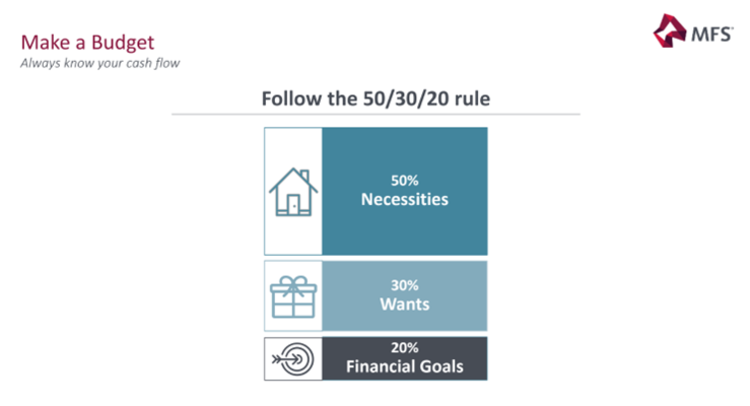
Learn more about budgeting, saving, and investing
Talking with an investment professional or a investment planner can help you understand the basics of investing — things like setting aside enough cash for an emergency, defining your time horizon and risk tolerance, and developing an appropriate asset allocation. You can also learn about investing by reading financial journals, watching financial news channels to learn the industry terminology, or listening to investment-related podcasts or market updates on the radio.
For example, one way you can create your budget is the 50/30/20 rule. You can allocate 50% of your spending towards necessities, 30% towards wants and 20% towards financial goals.
Source: Savvy Women, Smart Investors Client Seminar (PDF) - MFC[PSG1]
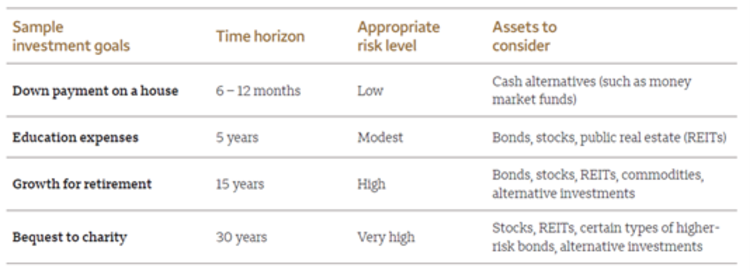
Set investment goals and research options
Investment goals can be as varied as the people who define them, but they generally fall into the categories of income, growth, or a mix of the two. Moreover, each of your investment goals will generally have an associated time period that helps determine what type of assets you should potentially use to assist you in reaching your investment goals with the appropriate level of risk.
CAR #0222-00802
Source: WFII Women and investing study – The strengths of women investors (March 2020)[PSG1]
Preparing for retirement:
If retirement is one of your investment goals, you need to consider your expected income from all sources versus your expected expenses. Even if you already are retired, it is still a good practice to periodically evaluate your income and expenses. A general rule of thumb is that you will need to generate at least 80% of your preretirement income when you are retired. Also, women generally live longer than men, so they likely will end up spending more on everything from groceries to health care.[PSG1]
Take action by developing, implementing and monitoring your investment plan
Items to consider when creating a long term plan:
- Produce a written Revocable Living Trust
- Recognize key people (durable powers of attorney and healthcare directives)
- Identify short-term and long-term goals
- Develop a budget that includes saving and investing.
- Establish strategies to achieve life’s goals
- Build a written investment plan
- Identify your investment objective
- Diversify
- Consider lending opportunities as needed
- Determine your appropriate asset allocation.
- Select investments.
- Monitor and rebalance your portfolio.
- Revisit your strategy when your circumstances change.
Pay It Forward:
- Teach children about money and finances.
- Teach the next generation about investing.
- Help children open their own accounts and supervise their investing and spending.


